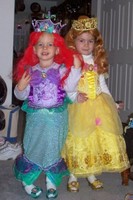Childhood studies scholar examines the new Halloween
CAMDEN – Childhood might be measured in moments, but some days seem to outshine others. For scholars studying contemporary
According to Dan Cook, a childhood studies scholar at Rutgers-Camden – home to the nation’s first Ph.D. program in the emerging discipline – these special days, much like Christmas, give children an opportunity to express their wishes with many parents actively encouraging them to do so.
In recent decades, however, sugary treats and dressing in costume are no longer reserved for special days but have become regular occurrences. Birthdays for some now can take a week to celebrate with separate parties for immediate family, extended family, classmates, and friends.
Halloween has dulled its horror edge as many costumes are little more than extensions of already established toy lines or television shows which children don most any day of the year. So if a plethora of princesses and superheroes knock on your door this October 31, you’ll know why.
“I’ve spoken with moms who negotiate their children’s birthday party themes, often involving media characters and costumes,” says Cook, an associate professor of childhood studies in Camden. “They’ll say ‘If you’re having a princess party, then why don’t you be Dora for Halloween?’ making one occasion an extension of the other connected by commercial media.”
Birthdays today may be celebrated with sometimes extravagant weeklong partying, but the day itself was not widely celebrated by children or adults until about the 1890s. Halloween was originally an autumn festival where subordinates could mock their superiors by imitating them in grotesque ways – often with the aid of alcohol. It did not become a day for kids to dress up for treats until around the 1920s.
"Halloween’s earlier iteration served as something of a safety valve for social unrest, much like Mardi Gras or Carnival. This kind of unruly behavior was tolerated because it was contained in a bounded period of time and space,” notes Cook. “Even Christmas, until the early-to mid-1800s, was more of a public carnival than a domestic celebration.”

From school mandates that now ban certain types of costumes to an increase in the availability of daily dress-up play wear, Halloween costumes rely less on folklore and more on popular culture. Because the characters are predictable and safe in adults’ eyes, there’s less of a chance to offend, but also less of an opportunity to innovate new interpretations of ancient figures and to explore different identities.
"Children now dress up as characters that come with fully developed commercial personalities. Sponge-Bob probably has a more elaborate back story than, say, Ishmael in Moby Dick," Cook says. "The exciting and scary thing about being a witch or a goblin is that you don't know where it could go."
Cook surmises that because dressing up for Halloween has blended into standard dress-up play, there are less stringent boundaries that allow kids to explore one-time only personalities in a contained, limited way.
“When boundaries and frames are fluid, there is greater opportunity for concern about whether the character the child temporarily becomes during Halloween can be put away afterwards. That’s why we have a more benign Halloween. The edge has been taken off because there’s a fear that the costume persona will seep into everyday life.”
Media Contact: Cathy K. Donovan
(856) 225-6627
E-mail: catkarm@camden.rutgers.edu